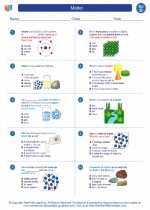Sandy Beaches
Sandy beaches are coastal landforms that are made up of sand. They are found along the coastline and are formed through the interaction of various geological and environmental factors.
Formation of Sandy Beaches
Sandy beaches are formed through the process of erosion, transportation, and deposition. Erosion occurs when waves, wind, and other natural forces break down rocks and minerals into tiny particles. These particles are then transported by water and wind and eventually deposited along the shoreline, forming sandy beaches.
Characteristics of Sandy Beaches
- Sand Composition: Sandy beaches are primarily composed of sand, which is made up of tiny particles of minerals and rocks.
- Dynamic Environment: Sandy beaches are constantly changing due to the action of waves, tides, and currents.
- Biodiversity: Sandy beaches are home to a wide variety of plant and animal species, including beach grasses, crabs, sand dollars, and shorebirds.
- Recreational Value: Sandy beaches are popular recreational areas for activities such as sunbathing, swimming, and beachcombing.
Ecosystem of Sandy Beaches
Sandy beaches support a unique ecosystem that is adapted to the harsh conditions of the coastal environment. Organisms such as beach grasses, sandpipers, and crabs have developed specialized adaptations to survive in this dynamic habitat.
Human Impact on Sandy Beaches
Human activities such as coastal development, pollution, and beach erosion can have a significant impact on the health of sandy beaches and their associated ecosystems. Conservation efforts and sustainable management practices are important for preserving these valuable coastal environments.
Study Guide
Here are some key questions and topics to consider when studying sandy beaches:
- Describe the process of sand formation and the factors that contribute to the development of sandy beaches.
- Explain the role of waves, tides, and currents in shaping sandy beaches.
- Discuss the biodiversity of sandy beaches and the adaptations of plants and animals to this environment.
- Examine the human impact on sandy beaches and the importance of conservation efforts.
By understanding the formation, characteristics, and ecological significance of sandy beaches, we can appreciate the importance of preserving these coastal ecosystems for future generations.
.◂Science Worksheets and Study Guides Fourth Grade. Matter

 Worksheet/Answer key
Worksheet/Answer key
 Worksheet/Answer key
Worksheet/Answer key
 Worksheet/Answer key
Worksheet/Answer key
 Worksheet/Answer key
Worksheet/Answer key
 Vocabulary/Answer key
Vocabulary/Answer key
 Vocabulary/Answer key
Vocabulary/Answer key
